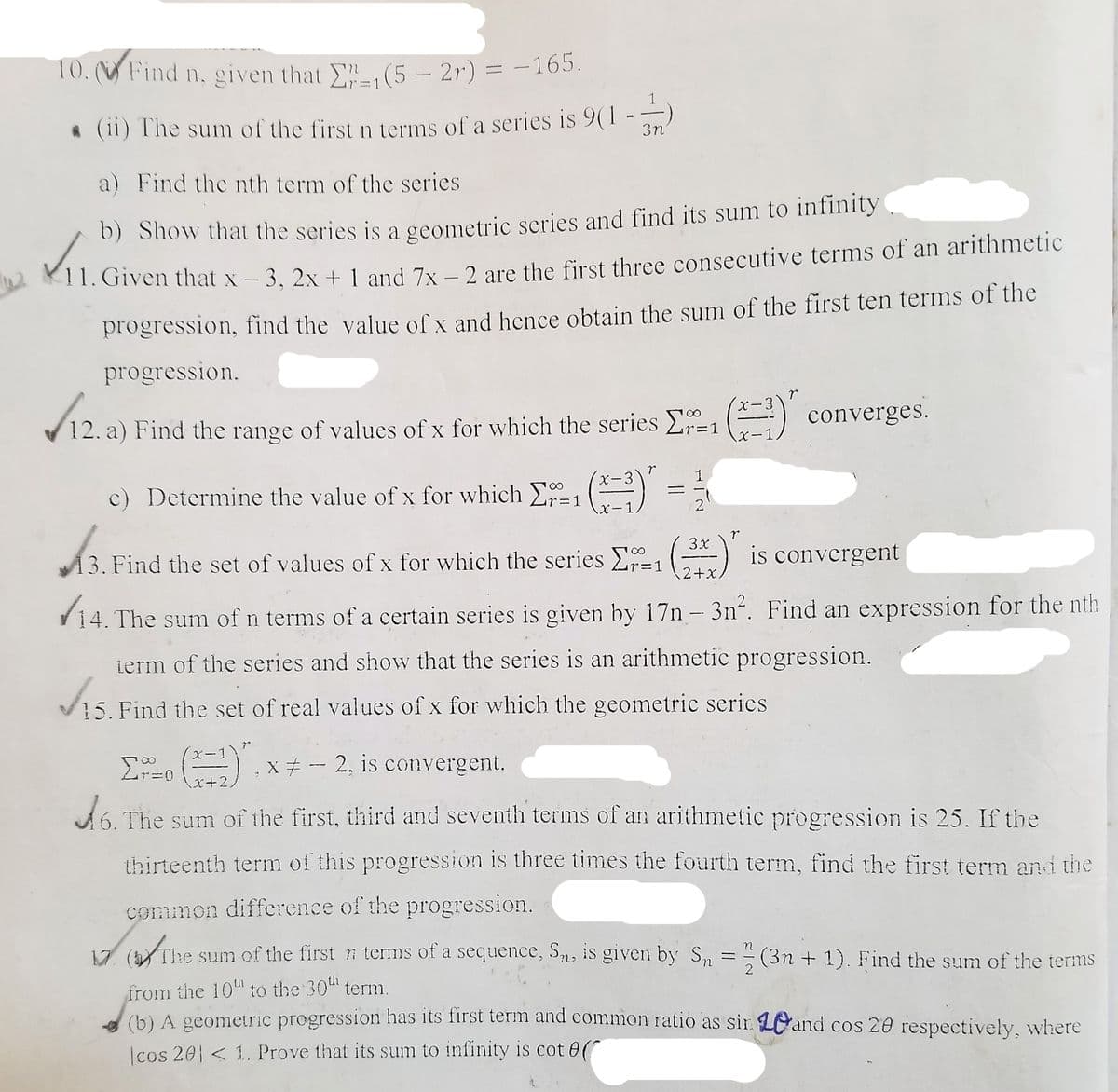12. a) Find the range of values of x for which the series E1 (=) converges. c) Determine the value of x for which E1 ) =
12. a) Find the range of values of x for which the series E1 (=) converges. c) Determine the value of x for which E1 ) =
Algebra & Trigonometry with Analytic Geometry
13th Edition
ISBN:9781133382119
Author:Swokowski
Publisher:Swokowski
Chapter10: Sequences, Series, And Probability
Section10.2: Arithmetic Sequences
Problem 67E
Related questions
Concept explainers
Equations and Inequations
Equations and inequalities describe the relationship between two mathematical expressions.
Linear Functions
A linear function can just be a constant, or it can be the constant multiplied with the variable like x or y. If the variables are of the form, x2, x1/2 or y2 it is not linear. The exponent over the variables should always be 1.
Question
Solve Q12a & 12c Showing detailly all steps

Transcribed Image Text:10. (V Find n, given that (5 – 2r) = -165.
* (ii) The sum of the first n terms of a series is 9(1 -
3n
a) Find the nth term of the series
b) Show that the series is a geometric series and find its sum to infinity
11. Given that x – 3, 2x + 1 and 7x – 2 are the first three consecutive terms of an arithmetic
progression, find the value of x and hence obtain the sum of the first ten terms of the
progression.
X-3
=) converges.
12. a) Find the range of values of x for which the series =1
X-1
X-3
1
c) Determine the value of x for which 1
X-1
r3D1
3x
3. Find the set of values of x for which the series E1() is convergent
r=1
2+x.
V14. The sum of n terms of a certain series is given by 17n - 3n". Find an expression for the nth
term of the series and show that the series is an arithmetic progression.
15. Find the set of real values of x for which the geometric series
Mo X# - 2, is convergent.
r+2,
A6. The sum of the first, third and seventh terms of an arithmetic progression is 25. If the
thirteenth term of this progression is three times the fourth term, find the first term and the
Common difference of the progression.
The sum of the first n terms of a sequence, S, is given by S
, =-
(3n + 1). Find the sum of the terms
2
from the 10" to the 30" term.
(b) A geometric progression has its first term and common ratio as sir Land cos 20 respectively, where
|cos 20 < 1. Prove that its sum to infinity is cot 0(
Expert Solution
This question has been solved!
Explore an expertly crafted, step-by-step solution for a thorough understanding of key concepts.
Step by step
Solved in 2 steps

Knowledge Booster
Learn more about
Need a deep-dive on the concept behind this application? Look no further. Learn more about this topic, advanced-math and related others by exploring similar questions and additional content below.Recommended textbooks for you

Algebra & Trigonometry with Analytic Geometry
Algebra
ISBN:
9781133382119
Author:
Swokowski
Publisher:
Cengage


Algebra & Trigonometry with Analytic Geometry
Algebra
ISBN:
9781133382119
Author:
Swokowski
Publisher:
Cengage
